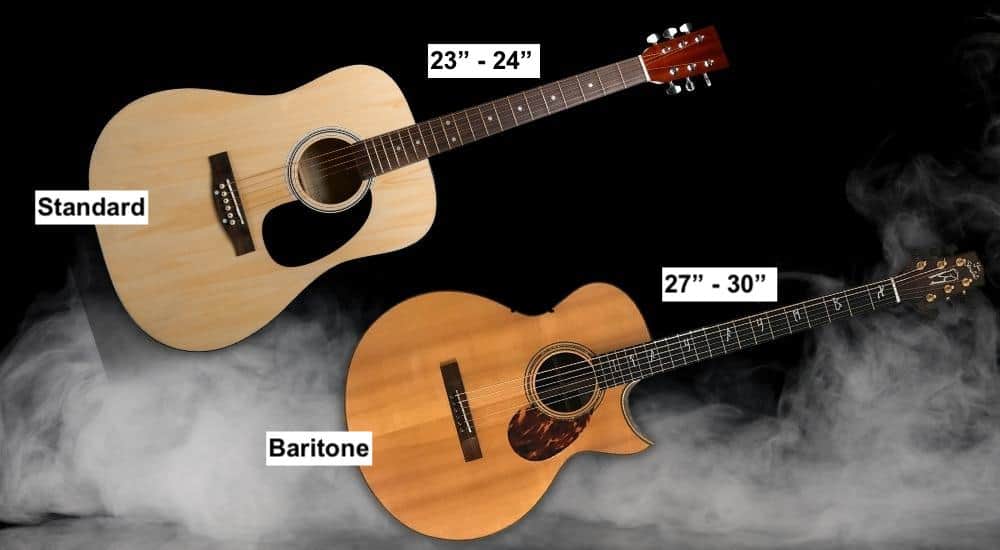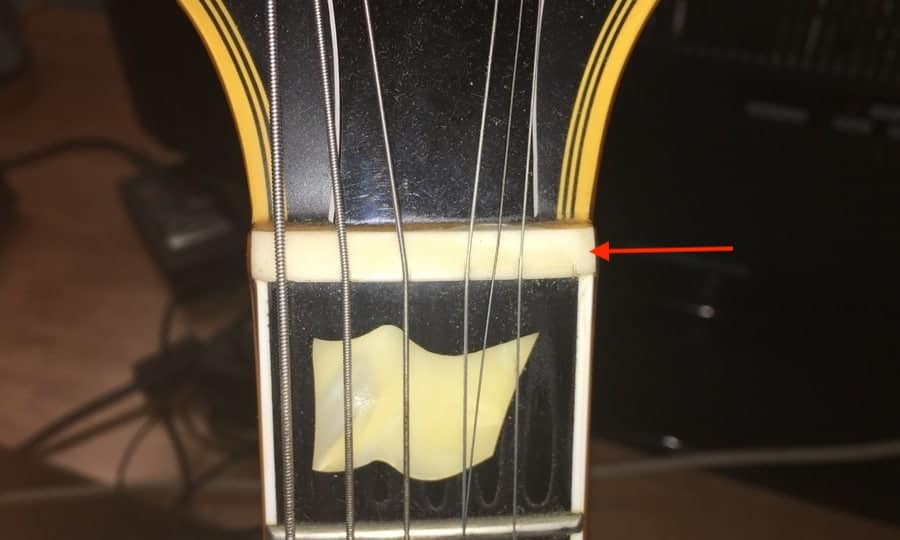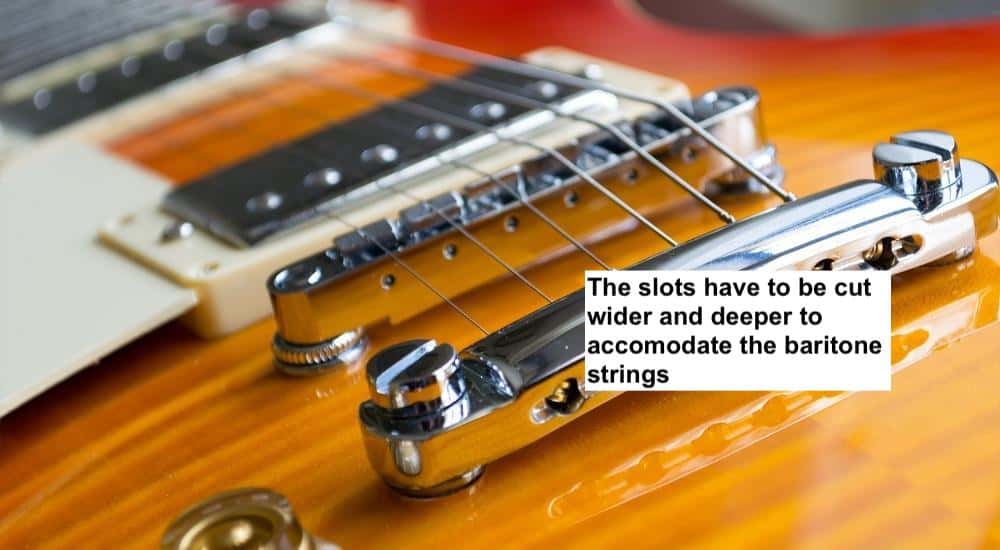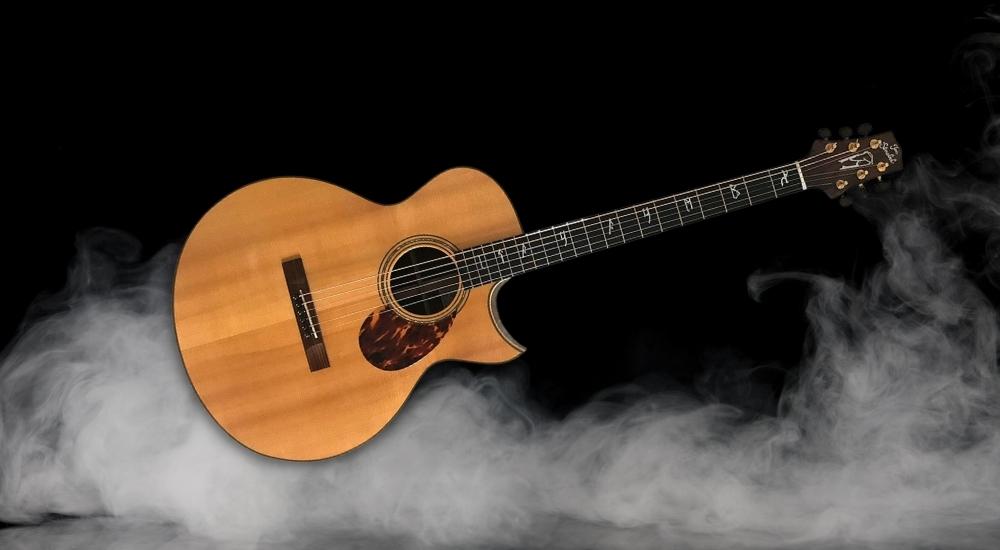There are several types of guitars out there, and most of them can be found at a local guitar shop or big-box retailers like Guitar Center, just to name one. Some of these instruments are a bit harder to find though. One is the baritone guitar.
The baritone guitar is a bit different from the standard guitar because its pitch can be found in between the regular 6-stringed guitar and bass guitar, making it something to consider getting for your collection or studio for not only playing but also to impress your guitarist friends who may not know about them.
The main difference between a baritone and standard guitar is that it has a longer scale length to accomodate for lower tunings. The most common tuning of a baritone guitar is B E A D F# B, which is one perfect fourth lower than a regular guitar.
The baritone guitar like the ABT60 from Alvarez has a wide range of uses but has a distinct sound and is used for specific genres. Surf music from the 1950s, for example, uses baritone guitars to achieve that boomy lower-range sound. We’ll explore a lot more differences below.
The Main Differences Between A Baritone and A Regular Guitar
1) Scale Length is Longer On a Baritone Guitar

One of the main differences between a baritone guitar versus a regular guitar is the scale length. The scale length on a standard Gibson guitar is about 23-24 inches and 25 1/2 on a standard Fender guitar. A Baritone is somewhere between 27” to 30 and a 1/2”.
This means you can use heavier gauged strings, and you won’t have a floppiness to them when they are tuned down so low.
This is one of the reasons why the neck on a bass guitar is much longer compared to a standard guitar. It has to be longer to compensate for the fact it’s tuned much lower and the strings are thicker.
In the same way, the neck on a baritone guitar is longer, and this is because the strings are heavier. They need that extra fret space to extend the range of the notes. The neck on a baritone guitar is usually extended by a few inches and frets.
A standard guitar neck has between 19 and 22 (sometimes 24 frets), and a baritone guitar has between 21 and 25 frets that can be a little larger than regular frets, sometimes called “jumbo” frets.
2) The String Gauge is Thicker on a Baritone Guitar
A standard baritone string setup would be 0.12 to 0.68. A typical lead guitarist’s string gauge setup would be .10 to .46, or light gauge strings.
The heavier the string, the lower it can be tuned down too. That’s why from the high e string to the lowest E string on a standard guitar goes from a higher pitch to a lower one.
You can see that in the image above, there is a baritone set. The string sizes on a baritone guitar are just a bit thicker than the ones for a regular guitar. This means, again, you can tune it down to where the baritone register is.
It sits between the bass clef and the treble clef. Comparing a bass guitar string vs. a regular guitar string, we can understand why this is.
The longer neck is better for the wider string of a bass or baritone guitar. It has to be this way to properly fit and not go out of tune a lot.
You can not, however, properly fit a set of larger strings through a bridge on a regular guitar because the strings are wound twice at the base, and they cannot properly fit through the hole in the bridge, although, it can depend on the bridge as well.
3) The Nut on a Regular Guitar is Different Than a Baritone Guitar

The nut is the next important part that also must fit the strings. This makes for proper intonation without fret buzz. The nut and bridge hold the string in place.
If the string doesn’t correctly fit in either location, it creates buzzing, and deviated intonation, and it will also go out of tune more often. In general, a nut that’s not cut properly for your strings is just going to cause a ton of very annoying problems.
One of my guitars right now, for example, has one slot cut too deep for some reason, and now I have to put in a slightly thicker string in that one slot to accommodate it.
It’s not a huge deal, but it’s not perfect. I’ll have to take it to a luthier sometime soon. (To be completely honest, it might’ve been me who messed with it).
4) The Bridge is Different On a Baritone Guitar

On a regular guitar, the bridge fits standard strings, and a baritone fits baritone or larger strings. With a bit of coaxing, you could make them fit, but they won’t have the right tightness. The intonation would have to be adjusted from the bridge.

You can check your intonation in many ways or by using a set-up gauge. Leave it up to professionals if you’ve never seen one done though, you don’t want to mess up your neck.
5) Tuning is Completely Different on a Baritone Guitar

The standard tuning on a regular guitar is E A D G B E. On a baritone guitar, the standard tuning is in B standard, which is B E A D F# B – think of it as tuning down five frets from a standard guitar. Another popular tuning on a baritone guitar would be A Standard, which is: A D G C E A.
A seven-string baritone guitar tuning would be B E A D G B E. This is why a lot of heavier music uses baritone guitars.
You can tune down lower than a regular guitar, and the guitar still sounds great and has great string tension. That said, don’t confuse seven-string guitars with baritone guitars because they’re not necessarily the same.
A seven-string isn’t set up to tune down 4-5 steps all across the board in the same way that a baritone acoustic guitar is. Additionally, the scale length isn’t quite as long either on some of the more common seven-string guitars.
What is the Point of a Baritone Guitar?

The baritone guitar was uncommon until the Danelectro company came out with one in the 1950s, which was popular for surf music and Western music back then. They often have bigger bodies than standard guitars, sometimes with f-holes like a Gretch.
Some also have larger pickups like double coils for that fuller lower register. They look incredibly cool and sound great as well. You can hear how they sound in some of Andy Mckee’s music, particularly “Ebon Coast” which you can check out on his YouTube channel here.
Really, the purpose of a baritone guitar is to access lower-pitched notes that aren’t possible to reach on a standard acoustic or electric guitar. It’s different from a bass guitar, however, in the sense that much of the higher range of a traditional guitar is still accessible.
The baritone guitar is, for the most part, still a standard guitar but it takes a step into the world of bass.
The nice thing about these instruments, the bass guitar, and the standard guitar is that understanding how to play just one of them means you should have a good handle on all of them which is something I’ve explained before in my other article.
Can A Normal Guitar Be A Baritone Guitar?
Simply put, a normal guitar can’t be set up to play as a baritone guitar without significant modification to the bridge, the scale and neck length, and the nut as well. It’s not as simple as just changing the strings and then tuning way down.
Can I Use Baritone Strings On a Regular Guitar?
As mentioned above, it’s not impossible to put baritone strings on a regular guitar but you’ll have to make several adjustments. The bridge would have to be replaced or adjusted for the heavier strings. The nut will also need to be replaced or filed down. The intonation would have to be adjusted to keep the strings in tune as well.
At the end of the day, you’d be better off buying a baritone guitar because it’s meant to be played with thicker and longer strings right off the bat. A standard guitar will function at its best with what it does, which is to be played within its typical range.
Are Chords Different On A Baritone Guitar?
Chords are not different on a baritone guitar because all of the strings are 4ths and a 3rd apart the same way that a standard guitar is. The difference is that the baritone guitar is turned to B standard or A Standard, which is a 4th or 5th lower than the standard guitar respectively.
In other words, because the baritone is tuned down a perfect 4th (from E to A) from a regular concert-tuned guitar E to E, the chord shapes are the same, but an E major chord transposes to a B major.
Standard A is an E major, and so on, a perfect 4th or five frets of de-tuning. You’ll be using the same chord shapes, but you’ll have to transpose from what you know on the regular guitar.
Other Articles You May Be Interested In
- What’s the Difference Between A Guitar And A Banjo?
- Why Does the Bass Guitar Only Have 4 Strings? [Explained]
- How Do I Know What Gauge My Guitar Strings Are?
Important Things to Note About Baritone and Standard Guitars
1) You don’t have to have both
You only need so many guitars as I’ve said in this article here. In fact, many guitarists know almost nothing about baritone guitars or that they even exist.
If anything, a baritone guitar is a model for a seasoned guitar player who just wants to play more esoteric music that’s out there like Andy Mckee songs, for example.
Gear Mentioned
1) Snark Tuner


 Written By :
Written By :
